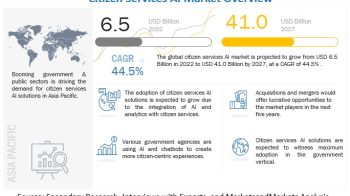Facial Recognition technology is a very well-versed biometric technology now, especially in its adoption in numerous applications. Due to its contactless interaction feature, it has been adopted by various industries, from security and surveillance to AI tools, and even providing a more personalized advertising experience, as compared to voice fingerprint scanning, voice recognition, texture recognition, and skin texture recognition technologies.
According to a recent technical publication, in 2022, globally:
- Around 20% of countries use facial recognition in educational institutes such as schools.
- 8 out of 10 countries use facial recognition in BFSI.
- Approximately 40% of countries have implemented facial recognition at their workplaces.
- Nearly 50% of countries use facial recognition in transportation and public sectors.
These statistics clearly state that facial recognition utilization is increasing and will grow significantly in the coming years. People are already using facial recognition in their everyday lives for unlocking phones, checking bank accounts, and tagging in social media accounts. Both consumers and companies benefit from advances in artificial intelligence (AI) and machine learning-enabled facial recognition.
So, What is Facial Recognition, and how does it work?
The facial recognition system uses biometrics to map facial features based on images or videos. It uses a person’s facial characteristics to collect, analyze, and compare patterns. It then compares information in the database of known faces and finds a match.
Facial recognition involves three simple steps: detection, analysis, and recognition.
- Detection – The camera captures a face from a photo or video at this stage. Then the camera draws a box around the face to autofocus it. This phase’s primary purpose is to determine a face’s presence and location.
- Analysis – The face recognition technology maps faces and measures the distance between the most critical face landmarks. These calculations are later transmitted into a string of numbers known as a “faceprint” or “face signature.” The faceprint is added to a recognition database.
- Recognition – The face signature is compared to a database of known faces. This process helps to confirm a person’s identity in a photo or video. The richer the diversity of images embedded into the system, the more accurate results we will get.
With the advancement of technologies such as artificial intelligence (AI), machine learning (ML), deep learning, and machine vision technologies, facial recognition technology is also shaping its future with profitable growth opportunities worldwide.
The key facial recognitions market vendors such as NEC Corporation, Aware, Inc., NVISO SA (nViso) Animetrics, Innovatrics, id3 Technologies (id3), Thales, Nuance Communications, Inc. Fulcrum Biometrics, TrueFace.AI, Amazon, FacePhi, Herta Security, Kairos AR, Inc., SightCorp Inc, and Microsoft Corporation are continuously investing in the development of facial recognition solutions and services. Amazon Rekoginition, Face++ facial recognition platform, Microsoft’s Face API, Face First, etc., are popular facial recognition solutions.
As per MarketsandMarkets (MnM) analysis, the global facial recognition market is projected to reach a market value of more than USD 8 billion by 2025 growing with a CAGR of 17.2% during the forecast period 2020-2025. The growing importance of the surveillance industry, increasing investment in facial recognition technologies by the government and defense sector, and rising technological advancement across industry verticals are some driving factors for the market growth. However, facial occlusion, face detection error, and lack of knowledge and awareness are significant challenges hindering the development of the facial recognition market.
The covid-19 pandemic has further accelerated consumers’ adoption of facial recognition solutions. Some fields where technology was in great demand during the pandemic were healthcare, travel and transportation, and public safety. For instance, many countries launched E-passports facilities that support facial recognition for immigration clearance. Some countries have started using facial recognition as the boarding pass even without creating an E-passport facility. The healthcare sector, facing an unprecedented safety issue during the pandemic, has increased the usage of facial recognition applications to limit the common touchpoints during verification in hospitals and public spaces, hence helping to reduce pathogen spread.
One of the issues that came across during the pandemic was the detection of the face while wearing a mask. Increased use of face masks has added another layer of complexity to face identification. But, the technology has responded positively and has created room for another innovation. Technology companies started innovating their facial recognition solutions by upgrading their algorithms to detect a face wearing a mask. NEC Corporation, a Japan-based leading firm, launched a facial recognition system that can read a person’s face wearing a mask with an accuracy rate of more than 99.9%.
Post-pandemic also, verticals like BFSI, healthcare, retail and eCommerce, automobiles, transportation, etc., are embracing face recognition for various verification purposes in the future. Facial recognition technology can provide efficient employee productivity monitoring and analysis for businesses. The most prominent case of using facial recognition software is to track employees’ “arrival” and “departure” times in a much easier way.
Facial recognition is an area of biometrics where many technologies can meet and enhance the capabilities of the technology. Today, advances in the hardware used in facial recognition systems, as well as data processing, storage, artificial intelligence, and automation, have opened new avenues for using and developing this ground-breaking technology.
Some of the key use cases include:
![*]() Cryptocurrencies
Cryptocurrencies
![*]() Next generation of mobile networks
Next generation of mobile networks
![*]() Smart and intelligent homes
Smart and intelligent homes
![*]() Identity and access management
Identity and access management
![*]() Contactless payments
Contactless payments
![*]() Social networking
Social networking
![*]() Airport Security and Border Security Management
Airport Security and Border Security Management
![*]() Smart Payment Systems
Smart Payment Systems
![*]() Digital Advertising
Digital Advertising
![*]() Smart retailing options such as smart shelves and many more.
Smart retailing options such as smart shelves and many more.
Click to get Sample PDF: https://www.marketsandmarkets.com/pdfdownloadNew.asp?id=995
![[Latest 2028] Cloud Security Market Estimation, Key Players, Growth Opportunities](https://mnmblog.org/wp-content/uploads/2024/04/cust-350x196.webp)

